01
A note from the team
TMI Project believes that sharing resources is an integral part of creating a just and powerful creative community. Since our inception in 2010 we’ve learned a lot, and with only one full-time staff person at the helm for the first 7 years, we also know how hard it is to get started. That said, starting a nonprofit arts program for social justice movement building can be a rewarding way to channel your creativity, satisfy your desire to take action, and can be an inspiring and impactful way to promote positive change in your community. This guidebook has been designed as a resource for anyone who would like to develop a true storytelling or artivist program (or organization) and will provide you with a step-by-step process to help you get started. Some information may be very helpful. Some may not suit your needs. Please feel free to take what you like and leave the rest.
We believe opportunities for creativity and innovation should not be kept behind closed doors for fear of competition. We should, as creatives and truth-tellers, lift each other up however we can. It is our hope that this shared resource will not only serve as a guide, but also a means of connecting like-minded individuals and aligned organizations so we can continue to support one another in the future. If you’re able to further your work with the help of this guide, we would love to hear about it. Please let us know and tag us in your social media so we can stay connected. Additionally, feel free to share it widely with others who may be able to benefit. If there is something that you would like added to this guide, please feel free to reach out about that too. This is a work-in-progress and our intention is that, with communal input, it continues to become more useful over time.
We hope you use this to create something brilliant that fills your soul and serves your community.
With gratitude,
The TMI Project Team

“TMI Project is a champion of humanity. Thanks for showing us how to model vulnerability and accountability, how to heal in community, and how to be our full authentic selves.”
– Tony Porter (he/him), TMI Project Advisory Board Member, CEO – A Call to Men
Staff & Workshop Leaders

Eva Tenuto

Blake Pfeil

Micah

Hayley Downs

Dara Lurie

Raine Grayson

Perla Ayora

Laura Marie Ruocco
Board of Directors

Erica Brown

Kyra Greweling

Maureen Bowers

Darnell L. Pierce

Mike Raimondi
02
Who we are
TMI Project is changing the world, one story at a time, by crafting and amplifying true stories that set us free. In our workshops, we guide people who don’t often have the chance to tell their stories and be heard. In our live performances and digital content, everyday unsung heroes do more than entertain. They boldly share their “TMI ” experiences to replace shame with freedom. As they step out of isolation, and into connection with those who listen, apathy turns to empathy and inspires people to take action.
Since 2010, TMI Project has led nearly 150 true storytelling workshops and staged live storytelling performances by nearly 3,000 storytellers, which have been presented to audiences of over 250,000 people in schools, colleges, prisons, mental health clinics, theaters, community centers, the United Nations and online.
Our award-winning podcast, The TMI Project Story Hour, features stories from more than a decade of live performances, profiling the brave souls who stepped on stage and shared the stories they were most afraid to tell. In the podcast, we take a deeper dive, and share the stories behind the secrets, and what happened next. The TMI Project Story Hour has been our most successful vehicle to expand our audience and deepen our impact. Recently, we won The Women’s International Podcast Awards in the category Changing the World One Story at a Time. We’re ranked in the top 1% of global rankings. We also were featured on Apple News and Noteworthy and Spotify’s Episodes You Won’t Want to Miss. We have a listenership in the U.S., India, the U.K. Iran, Iraq, Canada, Ireland, Germany, France, Australia and the Netherlands. The TMI Project Story Hour was recently nominated for The Sonic Boom Award in two categories, Gender Equity and Voices of the People.

“TMI Project’s methodology helps storytellers to craft and tell their stories to audiences. It is electrifying to witness, so immediately effective and personal. It makes undeniable these stories that might not have otherwise been given voice or in some cases, believed. By harnessing the power of vulnerability, audiences are gifted with new perspectives. It is thrilling, important, and vital work.”
– Mary Stuart Masterson, TMI Project Advisory Board Member, Tony-nominated actress, producer, and co-founder of Stockade Works/Upriver Studios
03
DEFINE YOUR PURPOSE AND VISION
- Understand your purpose: Clarify the core reason your organization or program exists. Think about what you aim to achieve and how you want to make a positive impact.
- Define your structure: Clearly outline the organizational structure you envision for your program. Determine whether you aim to establish a 501(c)(3) nonprofit, operate as a collective, or function as a specific working group. Understanding the legal and structural framework of your organization is crucial, as it influences your eligibility for funding, tax exemptions, and operational guidelines. This guidebook assumes a focus on 501(c)(3) status; however, this may not be the right fit for every organization.
- Identify your target audience: Determine who your mission is directed towards. Consider your customers, clients, or the community you serve. Understanding their needs will help shape your statement.
- Define your values: Outline the guiding principles and core values that drive your organization. Think about what you stand for, your ethical standards, and the ideals you want to uphold.
- Craft a concise statement: Write a clear and succinct sentence or two that captures the essence of your organization’s purpose, audience, and values. It should be memorable, inspiring, and reflect your unique identity. It’s helpful to include one concise and memorable line that helps your audience “get you” right away. Help them connect the dots to understand why you stand out from the rest.
- Keep it timeless: Avoid limiting yourself to current activities, stats, or trends that may change over time.
- Revise and refine: Review your draft mission statement and seek input from stakeholders, team members, or advisors. Refine the wording to make it powerful, engaging, and reflective of your organization’s identity.
- Communicate and integrate: Once you have a final mission statement, share it widely within your organization and use it as a guiding principle for decision-making, strategy, and daily operations.

“I’ve been deeply moved by the trust TMI Project inspires in people, by the creativity they prompt, by the specificity of the truths they awaken, and the freedom they catalyze through the safe spaces, deep listening, and attention offered.”
– V (she/her), (formerly Eve Ensler), TMI Project Advisory Board Member, Tony award-winning playwright, and co-founder of VDay/One Billion Rising
04
Conduct research and assess needs
- Define your goals: Clearly identify the purpose and objectives of your arts-based program. Understand what you aim to achieve through the program. (The work you have accomplished on the mission statement will already be put to good use!)
- Determine research questions: Develop specific research questions that will help you gather relevant information. These questions should focus on the needs, interests, and challenges of your target audience or community.
- Select research methods: Choose appropriate research methods based on your goals and questions. Common methods include surveys, interviews, focus groups, observations, and reviewing existing literature or data.
- Design surveys and interviews: If using surveys or interviews, craft well-structured and concise questions. Ensure they address the key aspects of your research objectives while being respectful and sensitive to the participants’ backgrounds and experiences.
- Conduct data collection: Administer surveys, conduct interviews, or facilitate focus groups to collect the necessary data. Ensure you obtain informed consent from participants and maintain confidentiality when required.
- Analyze data and interpret findings: Once you have gathered the data, analyze it for common themes, patterns, and trends that emerge from the responses. Interpret the research findings in the context of your arts-based program. Identify the needs, interests, and challenges of your target audience or community that the program can address. Determine the potential impact your program can have.
- Use findings to shape program design: Adjust your program design to effectively address the identified needs. Consider incorporating feedback, suggestions, and ideas from the community or participants to ensure relevance and effectiveness.
- Monitor and evaluate: Establish monitoring and evaluation mechanisms to assess the effectiveness of your program. Regularly gather feedback, measure outcomes, and make adjustments as needed to ensure ongoing improvement and impact.

“The first time I attended a TMI Project performance, I was in awe of the courage and strength of the readers as they told their stories of intimate partner violence. It was so powerful and encouraging to other survivors in the room. The intensity of their words was complimented by the depth of their healing. This is an amazing organization and I am proud to be a part of it.”
– Gwen Wright, TMI Project Advisory Board Member, Former Executive Director of the New York State Office for the Prevention of Domestic Violence
05
Secure Funding
For the long term sustainability of your program, it is crucial to diversify your funding sources so you are not overly reliant on a single source of income. A healthy program is fueled by a variety of revenue streams and can include grants, business/corporate sponsorships, individual donations, contracted work, and/or ticket sales to events. Develop compelling proposals and fundraising strategies to attract financial support. Do your due diligence to make sure all businesses supporting your program align with your mission and values, and that you are applying for grants that are truly appropriate for your program. You don’t want to create unnecessary work for yourself or your team just to receive funding.
- Define Your Fundraising Goals: Determine the specific financial targets and objectives you want to achieve through your fundraising efforts. Set realistic and measurable goals that align with your organization’s mission and long-term vision.
- Know Your Target Audience: Identify the individuals, groups, or entities most likely to support your cause. Develop a clear understanding of their interests, values, and motivations to tailor your fundraising strategies accordingly. This may help: 7 Steps to Define Your Target Audience.
- Craft a Compelling Case for Support: Clearly articulate your program’s mission, vision, goals, and impact. Explain why your cause is important and how it makes a difference. Use stories, statistics, and testimonials to create an emotional connection with potential donors.
- Broaden Your Fundraising Strategies: Explore multiple fundraising avenues to maximize your reach and engagement. Consider options like individual donations, corporate sponsorships, grants, events, online campaigns, and partnerships.
- Build Relationships with Donors and Supporters: Cultivate relationships with existing and potential donors through personalized communication and regular updates. Express gratitude and acknowledge contributions promptly and sincerely. Provide opportunities for donors to engage with your organization and witness the impact of their support. Make sure to include messages of thanks in all of your communication. Always let your donors know how they have helped and express gratitude for their support before you make another ask. If you are a tax exempt 501c3, don’t forget to remind your individual donors that they can receive tax benefits by supporting the organization. For help drafting an acknowledgement letter, here is an example of one of ours.
- Develop a Fundraising Plan: Create a comprehensive fundraising plan that outlines your strategies, activities, and timelines. Set specific targets for each fundraising avenue and allocate resources accordingly. Continuously evaluate and refine your plan based on feedback and results.
- Leverage Technology and Online Platforms: Utilize digital platforms, social media, and crowdfunding websites to expand your reach and engage with a wider audience. Make it easy for supporters to donate online and share your cause with their networks. Feel free to check out our social media platforms or our website for an example of this in action.
- Host Fundraising Events: Organize events that align with your cause, such as galas, auctions, charity runs, or community gatherings. Promote your events effectively, provide unique experiences, and create opportunities for attendees to contribute.
- Seek Grants and Corporate Sponsorships: Research and apply for grants from foundations, government agencies, and corporations that align with your organization’s mission. Tailor your proposals to meet specific grant requirements and demonstrate your impact. This may help: Grant Writing Template. Here is a link to our business sponsorship page. Feel free to use it as inspiration for a model that works for you.
- Measure, Evaluate, and Recognize: Regularly assess the effectiveness of your fundraising efforts against your goals. Collect and analyze data on donor acquisition, retention, and engagement. Recognize and celebrate the contributions of donors, volunteers, and supporters publicly.
Additionally, ensure that all of your fundraising efforts align with your mission and values. At TMI Project, accessibility is a key value. We do not have elite fundraisers and no longer have ticketing for any of our events. Instead, we apply for grants to support events, create sponsorship opportunities for our events, and give people ample opportunities to donate whenever they attend. This model allows everyone to have access while we also reach our financial goals.
“Wild Earth supports TMI Project because they continue to center the voices of those who are least represented in the media. TMI Project provides opportunities for those individuals to become powerful storytellers. Oral storytelling has always been a powerful method of shaping culture, and Wild Earth wants future generations to learn from the experiences of the diverse swath of identities living today.”
– Omari Washington, Executive Director, Wild Earth
06
Establish Partnerships
- Identify your goals: If you think your program will benefit from forging a strategic partnership with an aligned nonprofit organization, take the time to clarify the specific goals of your proposed partnership. Clarify your objectives, whether it’s social responsibility, programmatic partnership, community outreach, marketing, or financial support.
- Research nonprofit organizations: Explore nonprofits that align with your goals and values. Look for organizations that work in areas relevant to your mission or have a similar target audience.
- Reach out: Contact the organizations you’re interested in partnering with. Introduce yourself, explain your mission, and express your desire to collaborate. Share how your partnership could benefit both parties and the community.
- Understand their needs: Schedule meetings or calls to learn more about the nonprofit’s goals, projects, and challenges. Understand their specific needs, as this will help tailor your partnership proposal and identify opportunities for collaboration.
- Craft a partnership proposal: Develop a detailed proposal outlining how the partnership will work and the mutual benefits involved. Include specific ideas for joint initiatives, programs, or campaigns that align with your goals and the nonprofit’s mission.
- Establish clear expectations: Clearly define the responsibilities, commitments, and expectations of both parties. Outline how resources, funds, or personnel will be shared, and discuss how you will measure and evaluate the partnership’s success.
- Collaborate on projects: Implement the agreed-upon initiatives together. Ensure effective communication, regular updates, and ongoing collaboration to address any challenges that may arise.
- Provide support: Offer resources, skills, or volunteers to assist the nonprofit’s projects. Actively engage in the partnership, demonstrating your commitment and willingness to contribute to their cause.
- Promote the partnership: Share the partnership with your stakeholders, employees, and customers. Highlight the joint efforts, impact, and success stories through various channels such as social media, newsletters, and press releases.
- Evaluate and adjust: Regularly assess the partnership’s effectiveness, impact, and alignment with your goals. Seek feedback from both parties and make adjustments as necessary to improve collaboration and address emerging needs.
“Thank you so much to the storytellers and the entire team at TMI Project! Such an amazing event. Intersectionality is REAL! We appreciated the partnership.”
– Jason J. (he/him), Gap Inc.
07
Develop A BOARD OF DIRECTORS AND ADVISORY BOARD
Develop A BOARD OF DIRECTORS AND ADVISORY BOARD
If you are looking to start a nonprofit organization, building a strong governance structure is essential for long-term success and sustainability. A board of directors and an advisory board play distinct roles in guiding your organization’s strategic direction, ensuring financial stability, and providing expertise. If you choose to incorporate your nonprofit, having a board is also a legal requirement. Developing these boards requires thoughtful consideration and strategic planning, but the effort is worth it. These boards can provide valuable guidance and support that contribute to the growth of your program. As you establish these structures, remember that ongoing communication, transparency, and mutual respect are key to fostering effective partnerships with your board members.
- Identify roles and responsibilities: Clearly define the specific responsibilities and expectations for your board members, both directors and advisors. This includes legal duties, financial oversight, and active participation in shaping the organization’s strategies. For your advisory board, clearly communicate that the advisory board provides insights, recommendations, and guidance based on expertise – they won’t have fiduciary responsibility.
- Recruit diverse members: Seek individuals with diverse skills and backgrounds that align with your program’s mission. Look at the board holistically to ensure you are inviting in voices that will differ from your own and the other members.
- Develop clear and fair onboarding protocols: Develop a nomination process involving application reviews, interviews, and assessments based on alignment with your program’s values and goals. Provide comprehensive orientation to new board members, introducing them to your program’s history, mission, programs, and governance structure. Implement a system for evaluating the board’s performance collectively and assessing individual contributions. The accountability ensures fulfilling participation.
- Set clear expectations: Communicate the time commitment, meeting schedule, and the level of involvement you expect from your board members. Ensure they understand the importance of their role in driving the organization forward. Schedule regular board meetings for discussions on strategic matters, financial reports, and informed decisions. Foster open dialogue and collaboration.
- Engage your boards in key decisions: Engage the board in strategic planning sessions to set goals, strategies, and resource allocation. Ensure active engagement in financial oversight, reviewing budgets, financial statements, and legal compliance. Continuously review and update these goals in collaboration with them. Consult both the board of directors and advisory board members for significant decisions related to program direction, initiatives, and collaborations.
- Build meaningful relationships through communication: Consistently communicate to your boards that they are an integral part of your program’s team and continued success. Keep board members informed about the program’s progress, accomplishments, challenges, and upcoming activities. Regular communication maintains engagement. Recognize variable availability among board members; be flexible in engagement while ensuring understanding of your program’s needs and priorities. Your boards should feel like they are there to work with you to protect and care for something that they are as passionate about as you, rather than a hindrance to your program’s success.
- Encourage networking opportunities: Leverage your board member’s networks to connect with potential partners, donors, and collaborators to grow your program’s reach and enhance it’s impact.
- Recognize and appreciate: Express gratitude to your boards’ commitment to your program through public recognition, appreciation, events, and showcasing their expertise in your program’s materials.

“I decided to join TMI Project’s board because I believe storytelling has always been the most compelling way to learn and unlearn ways of being and thinking.”
– Darnell, TMI Project Board of Directors
08
Promote and advocate
Develop a strong communication and marketing strategy to promote your arts program and raise awareness. Depending on how your audience receives and engages in media, you may want to use social media platforms, websites, newsletters, press releases, local media, print, radio, podcasts, or mailings to reach your target audience. Additionally, advocate for your cause by organizing public discussions, forums, and advocacy campaigns to influence policy and societal change. Make sure your communication aligns with your programming. For instance, at TMI Project, we make sure all of our messaging is driven by storytelling.
- Define your objectives: Determine what you want to achieve with your communication and marketing efforts. Are you looking to raise awareness, increase participation, or secure funding? Clarifying your goals will guide your strategy. If you need to achieve multiple goals, communicate the different goals clearly. For clarity, consider limiting the CTAs (call-to-action) to one per communication.
- Identify your target audience: Understand who your program is aimed at and tailor your messaging accordingly. Consider demographics, interests, and communication preferences of your audience to effectively reach and engage them. For example, if you are looking to engage youth, TikTok might be a great platform, but if you are working with elders, you may want to try phone calls and/or sending out physical newsletters instead. Make sure you are creating communication plans that will reach your desired audience.
- Craft your key messages: Develop clear and compelling messages that highlight the unique value and impact of your arts nonprofit program. Focus on the benefits it offers and the positive outcomes it generates.
- Select communication channels: Choose the most effective channels to reach your target audience. This could include social media platforms, email newsletters, traditional media outlets, community partnerships, or your organization’s website. Be strategic in your selection and consider the resources required for each channel.
- Create a content plan: Outline a schedule of communication activities and content to be shared across various channels. This could include blog posts, videos, event announcements, success stories, artist spotlights, or behind-the-scenes glimpses. Ensure your content aligns with your key messages and resonates with your audience.
- Utilize storytelling: Art has a powerful way of connecting with people emotionally. Incorporate storytelling techniques into your communication and marketing materials to engage and inspire your audience. Share personal stories, testimonials, or impactful anecdotes that highlight the transformative power of your program.
- Measure and evaluate: Establish metrics to track the success of your communication and marketing efforts. This could include website traffic, social media engagement, event attendance, or fundraising goals. Regularly analyze and assess the data to understand what is working well and make adjustments as needed.
ADDITIONAL RESOURCES:

“One of the reasons I’m so enthusiastic about TMI Project and the work that they do is because the organization is living proof of something I deeply believe: being able to tell your story is a human right.”
– Celeste Lecesne, TMI Project Advisory Board Member, Academy Award-winner and co-founder of The Trevor Project
09
Evaluate and Adapt
“Recently, I was planning a work event. I was sure of the goal but not the means. I reached out to TMI Project and they took my very unorganized ideas and created magic!”
– Robert A. (he/him), Berkshire Hathaway
Regularly evaluate your program’s impact and effectiveness. Collect feedback from participants, partners, and stakeholders to assess the outcomes of your initiatives. Use this information to refine your programs, measure progress towards your goals, and adapt your strategies accordingly. The results of your evaluations will inform so much. You will have a better chance of getting grants once you have data to back up your effectiveness. Your program will continue to meet the needs of your community as they inform you about ways you can improve. Take every critique, conflict, or setback to learn about how you can improve. When you receive consistent accolades for an aspect of your program, continue to nurture that area so it can grow and thrive.
- Develop measurable indicators for clear objectives: Identify specific indicators that can measure progress towards clear objectives. For example, you could track attendance numbers, participant/audience/partner/donor feedback, community partnerships, or changes in participants’ artistic skills, knowledge, attitudes, and/or beliefs.
- Collect relevant data: Determine the data collection methods that align with your indicators. This could involve surveys, interviews, observations, pre- and post-program assessments, or analyzing existing data. Ensure you collect both quantitative (numbers, statistics) and qualitative (descriptive, subjective) data for a comprehensive evaluation.
- Analyze and interpret the data: Once you have collected the data, analyze it to understand the outcomes and impacts of the arts programming. Look for patterns, trends, and correlations between different data points. Consider using statistical tools, visualizations, or qualitative analysis techniques to aid in interpretation.
- Assess program effectiveness: Evaluate whether the arts programming is achieving its intended outcomes and meeting the established objectives. Compare the data collected against the initial goals and indicators. Determine the extent to which the program has made a positive impact and consider any areas for improvement.
- Consider stakeholder perspectives: Gather feedback from various stakeholders, including participants, artists, staff, board members, volunteers, partners, and community members. Their perspectives can provide valuable insights on the program’s strengths, weaknesses, and overall impact. Surveys, interviews, or focus groups can be effective methods for obtaining stakeholder feedback.
- Communicate and report findings: Share the evaluation findings with relevant stakeholders. Present the data in a clear and concise manner, highlighting key findings and recommendations for improvement. This helps demonstrate transparency and allows stakeholders to make informed decisions based on the evaluation results.
10
Contact Us
We hope this guidebook has been helpful for you as you delve into your artistic endeavor.
After reading this guidebook, If you have any feedback or suggestions, you can contact us by emailing info@tmiproject.org. Due to our limited capacity, we can’t guarantee a response, but we will always read your emails and incorporate suggestions as we see fit. Additionally, please let us know what you’re working on! As mentioned, this is not just meant to be a resource, but a catalyst for a creative community!

